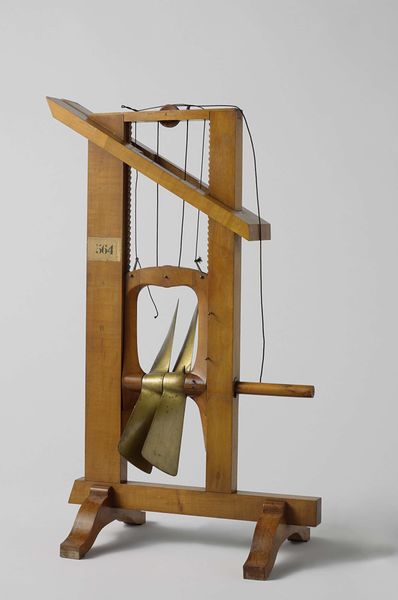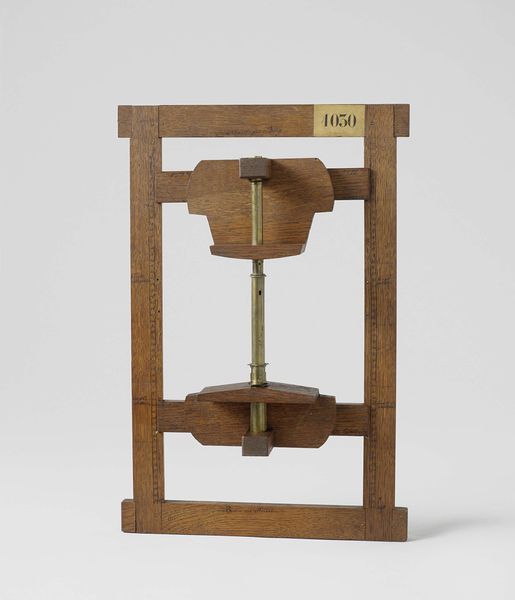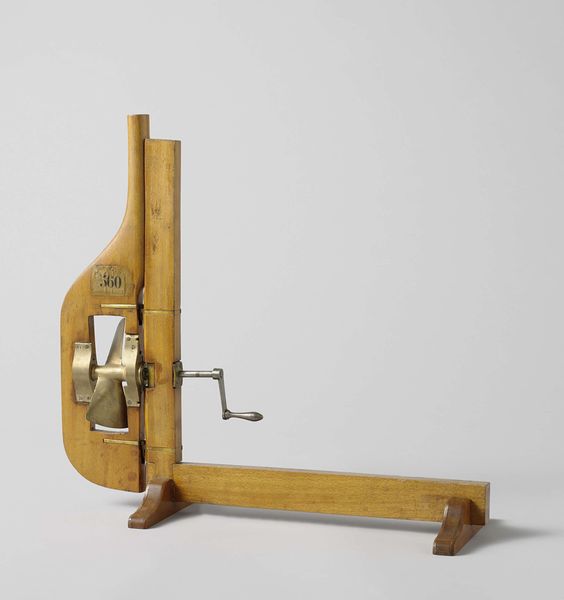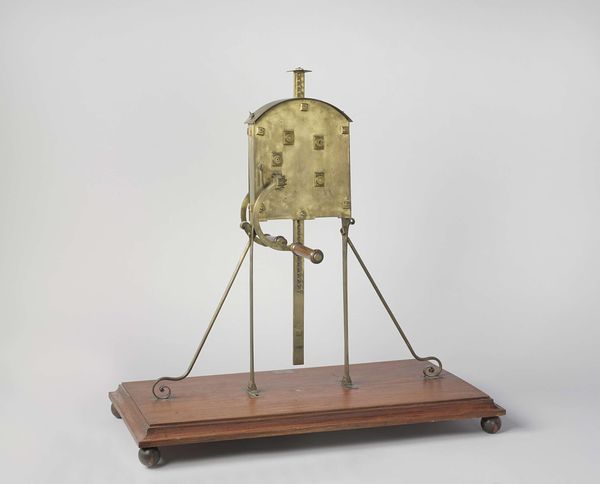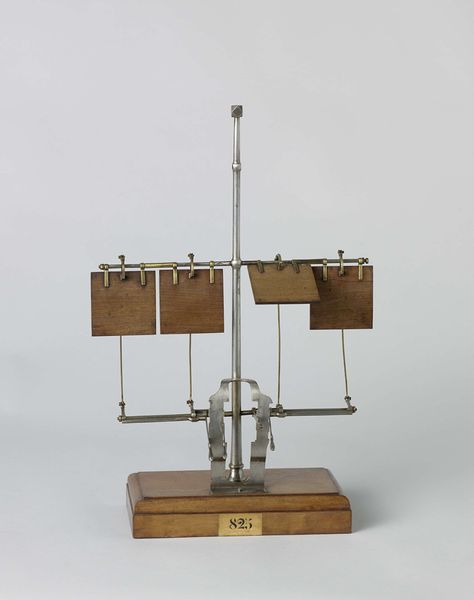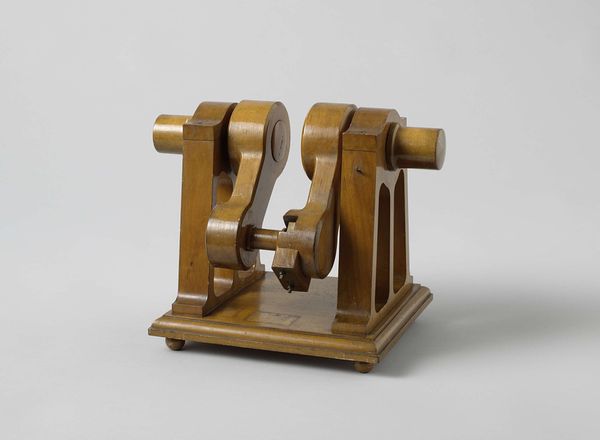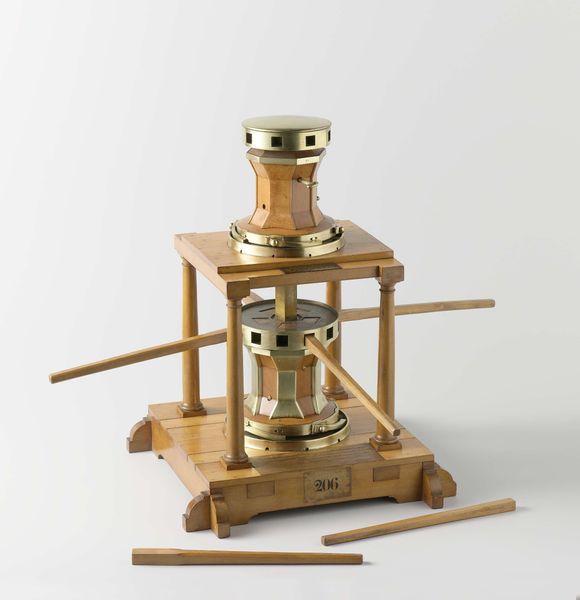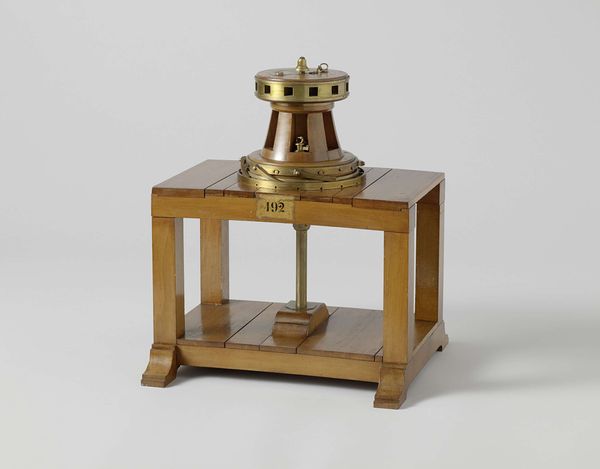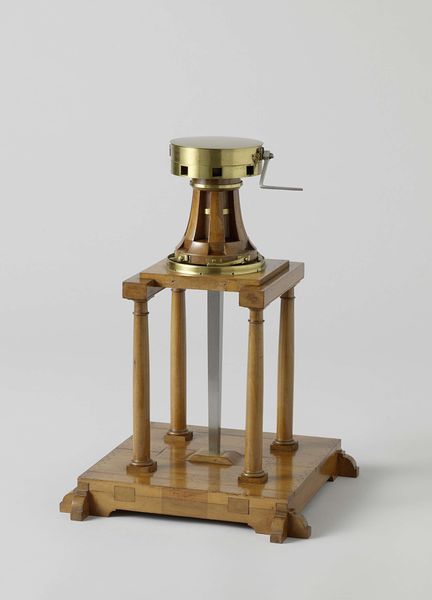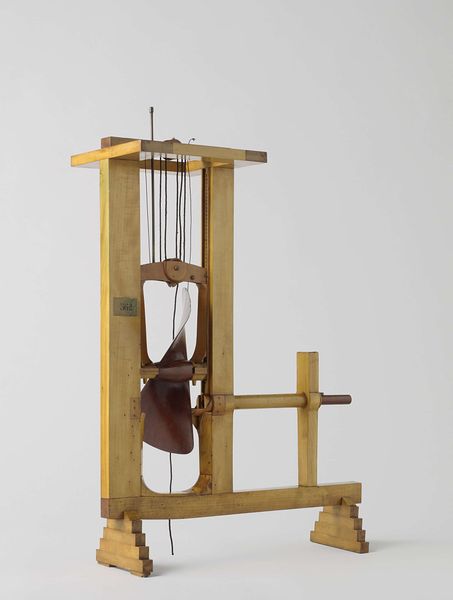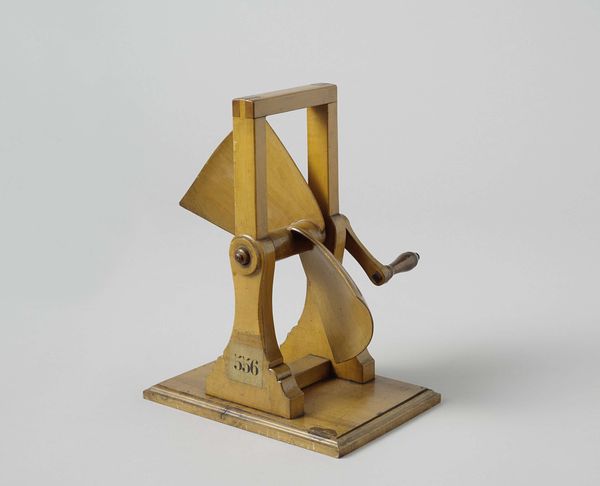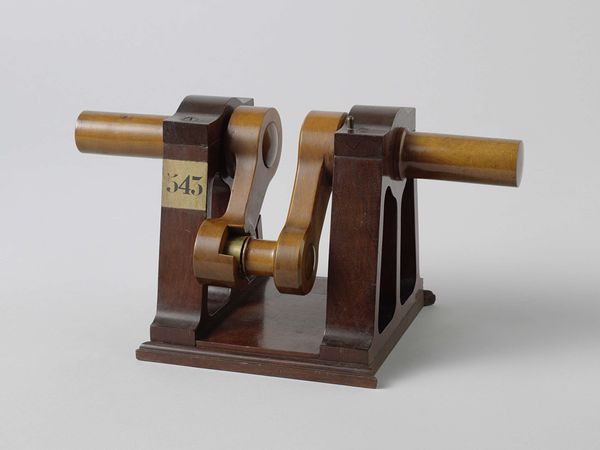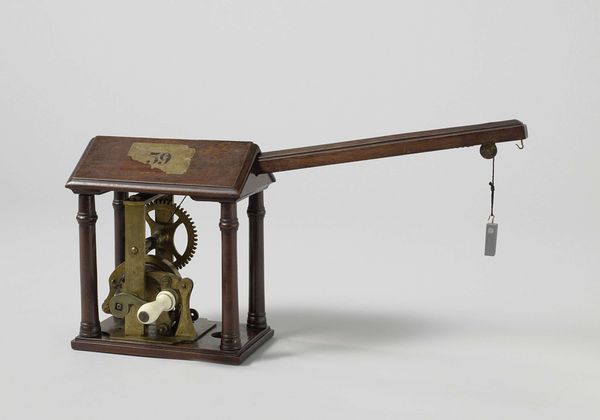
brass, metal, sculpture, wood
#
brass
#
metal
#
sculpture
#
wood
#
academic-art
Dimensions: height 46.5 cm, width 37.6 cm, depth 22.5 cm
Copyright: Rijks Museum: Open Domain
Editor: So this is "Model of a Life Buoy," from 1820. It's anonymous, and made of brass, metal, and wood. It has the feeling of some kind of odd scientific instrument... What do you see in it? Curator: This piece immediately makes me think about the Industrial Revolution and the changing relationship between labor, materials, and artistic production. It isn't exactly beautiful, is it? But it reveals so much about the value society placed on industry and technology at the time. Editor: So you're focusing more on its historical function as a potential device, rather than aesthetic appeal? Curator: Precisely. Consider the materials: brass, wood, metal. These weren't simply chosen for their aesthetic qualities. Instead, it is much more about durability, functionality, and the availability of these specific materials through contemporary manufacturing processes. Do you see it challenging the separation between fine art and practical craft? Editor: I see what you mean! I hadn't really considered the labor that went into its construction, and how different those methods were compared to creating traditional sculpture, for example. Curator: Think about the social context in which this was made. Lifesaving technology was becoming increasingly important alongside expanding maritime activities. This object serves as a reflection of those needs. Its production highlights the evolving role of craftsmanship and technological innovation in art. Editor: That's really fascinating. I was so caught up in seeing it as an object, I missed thinking about the bigger picture: of manufacturing, accessibility and cultural demands. Curator: Exactly. By considering the material conditions of its making and its intended function, we can understand this sculpture not just as a singular piece, but as a material embodiment of broader societal shifts. It is a tangible, manufactured emblem of its time. Editor: This makes me see how important it is to think about art in connection with wider social forces! Thanks.
Comments
No comments
Be the first to comment and join the conversation on the ultimate creative platform.
